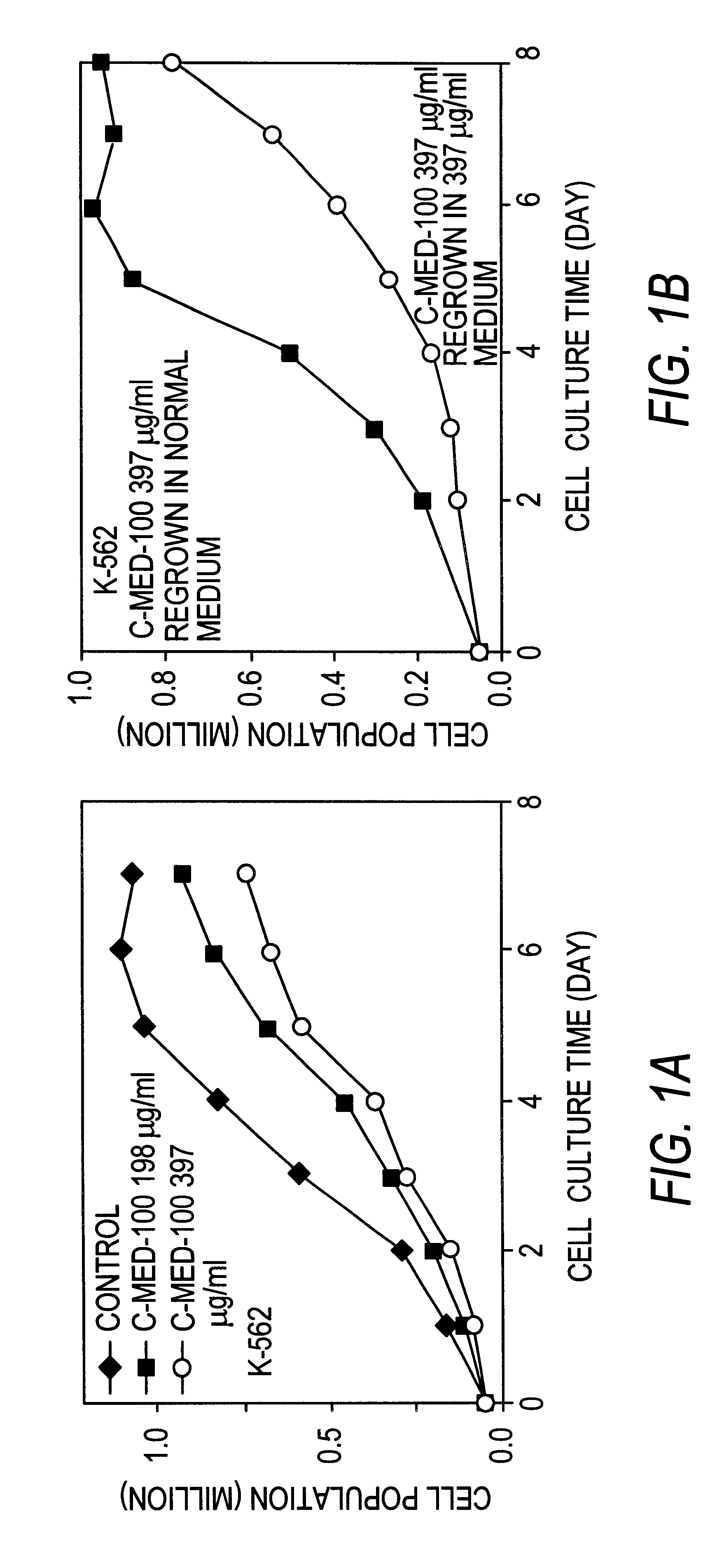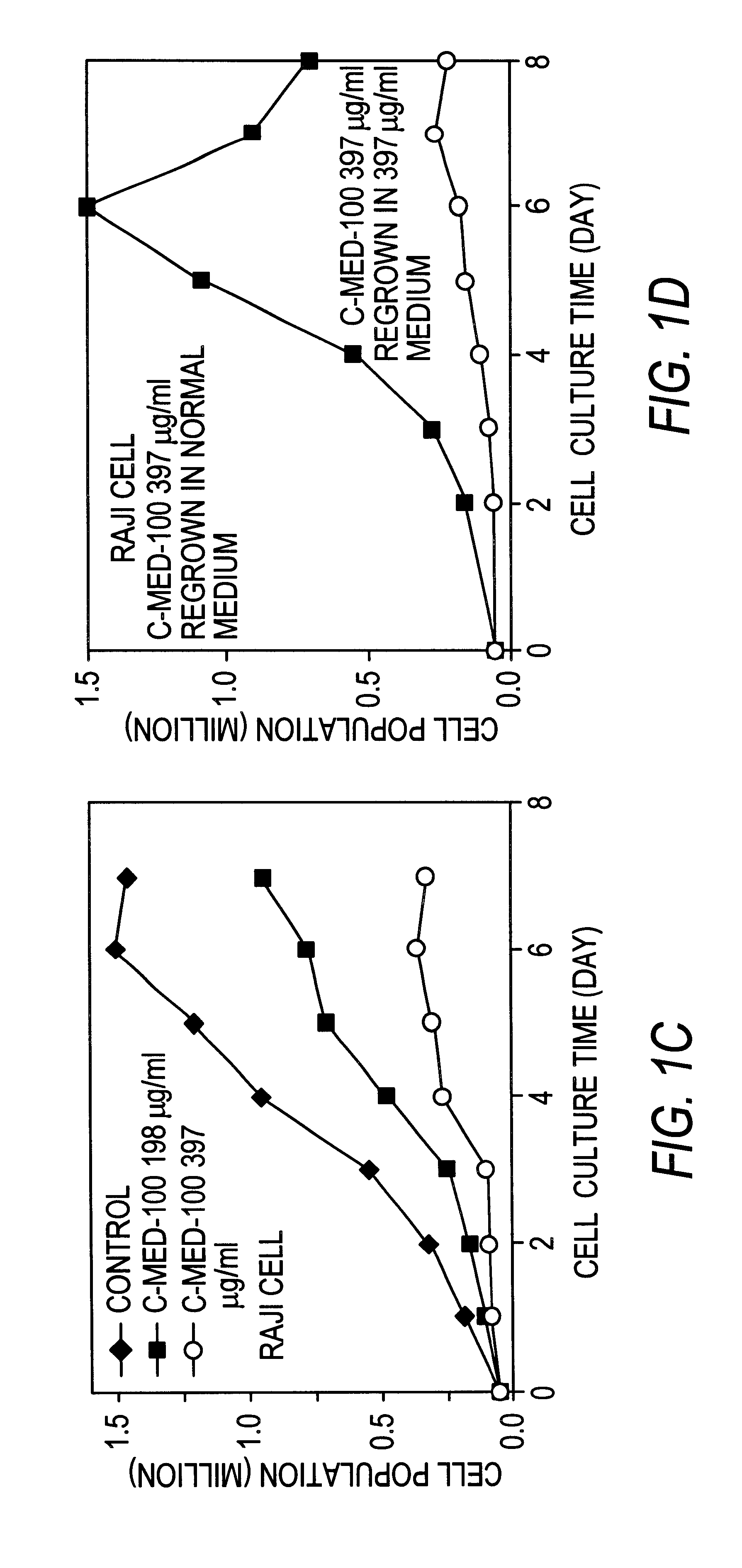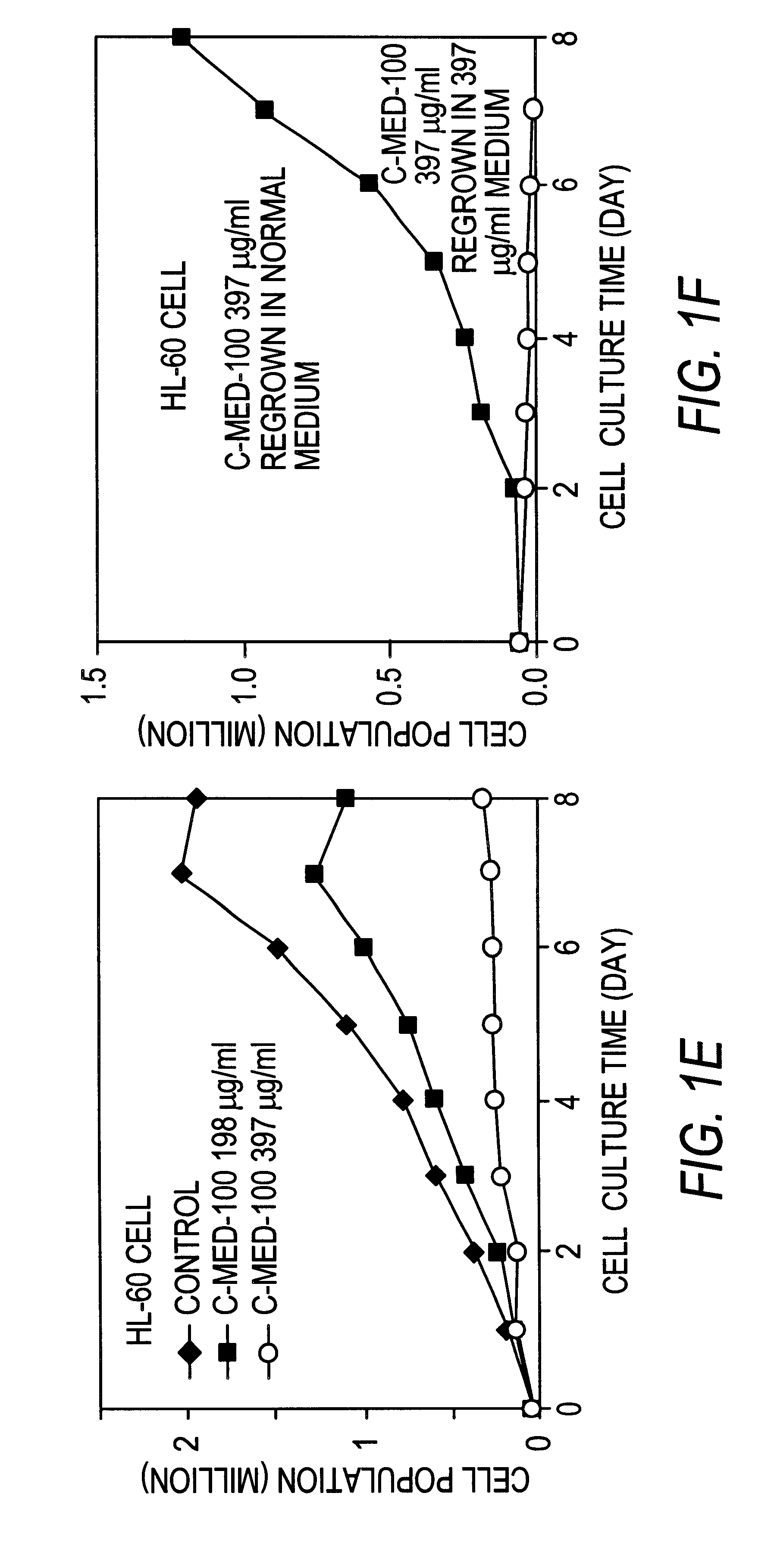Method of preparation and composition of a water soluble extract of the plant species Uncaria for enhancing immune, anti-inflammatory and anti-tumor processes of warm blooded animals
a technology of warm blooded animals and plant species, which is applied in the directions of drug compositions, plant/algae/fungi/lichens ingredients, biocide, etc., can solve the problems of not teaching one skilled in the art, the method of preparation and dosing is a serious deviation, and the most common biologically active plant products (e.g. steroids and alkaloids) are also depleted
- Summary
- Abstract
- Description
- Claims
- Application Information
AI Technical Summary
Problems solved by technology
Method used
Image
Examples
example 1
Preparation of Uncaria Extracts (C-Med-100).
One hundred and fifty grams of air-dried bark (collected from Campa Indians by CampaMed, Inc., Arlington, Vt.) or pulverized bark powder (supplied commercially by MW International, Inc., Hillside, N.J.) of Uncaria (Willd), also known commonly as Una de Gata or Cat's Claw, were mixed with 5 liters of tap water and heated in a stainless steel pot to the subboiling point (about 90-100.degree. C.) for 20-24 hours until the hot water extract was concentrated to about 900-1000 milliliters by evaporation. The dark brown extract was then adjusted to exactly 1000 milliliters, filtered through common coffee filters (Melitta Scandinavia AB), and then centrifuged at 3000.times.g for 15 minutes at 40.degree. C. to produce a particulate-free water extract equal to 150 grams crude bark per 1000 milliliters or 0.15 grams per milliliter. Next 50 milliliter aliquots of the water extract were transferred into cellulose membrane dialysis tubing (pore size 2.4...
example 2
Anti-tumor Activity of Uncaria Extract (C-Med-100).
The anti-tumor activity of C-Med-100 extract prepared as in Example 1 was evaluated in vitro using 2 human leukemic cell lines (HL-60 and K-562) and a mouse lymphoma cell line (Raji). The anti-proliferative potency of C-Med-100 was assessed by counting the total number of cells by microscopic analysis at 400.times. magnification. The cancer cell lines were seeded in duplicate 2 milliliter cultures at a cell density of 0.5.times.10.sup.5 cells per culture in 15 milliliter Falcon test tubes. The culture medium was RPMI with 10% fetal calf serum and the test tubes were incubated under standard conditions (i.e. 37.degree. C., 5% CO.sub.2 and 80% humidity). C-Med-100 extract was added at 198 and 397 .mu.g per milliliter together with the cell seeding, and the incubation was continued for 8 days. The total number of cells in each culture was determined every day by hemocytometer counting in the presence of trypan blue. After 8 days of gro...
example 3
Induction of Apoptosis by Uncaria Extracts (C-Med-100).
Apoptosis is a natural occurring form of cell death or suicide of particular significance to maintaining competent homeostatic inflammatory and immune responses necessary as a primary defense against many diseases including cancer, viral infections, AIDS, autoimmune and neurodegenerative disorders. Agents that can induce apoptosis are potential anti-inflammatory and anti-tumor drugs because they may have the ability to induce apoptotic death in malignant or inflammatory macrophages or monocytes which are known to be particularly sensitive to induction of apoptosis. Likewise, such agents simultaneously stimulate immune cell function by limiting or reducing the production of TNF-.alpha. by the inflammatory cells which are a well known natural occurring agent that is cytotoxic to lymphocytes and thus immunosuppressive (Apoptosis reviewed by C. B. Thompson, Science 267:1456-62, 1995). The data in this Example (FIG. 2) demonstrates a...
PUM
 Login to View More
Login to View More Abstract
Description
Claims
Application Information
 Login to View More
Login to View More - R&D
- Intellectual Property
- Life Sciences
- Materials
- Tech Scout
- Unparalleled Data Quality
- Higher Quality Content
- 60% Fewer Hallucinations
Browse by: Latest US Patents, China's latest patents, Technical Efficacy Thesaurus, Application Domain, Technology Topic, Popular Technical Reports.
© 2025 PatSnap. All rights reserved.Legal|Privacy policy|Modern Slavery Act Transparency Statement|Sitemap|About US| Contact US: help@patsnap.com



